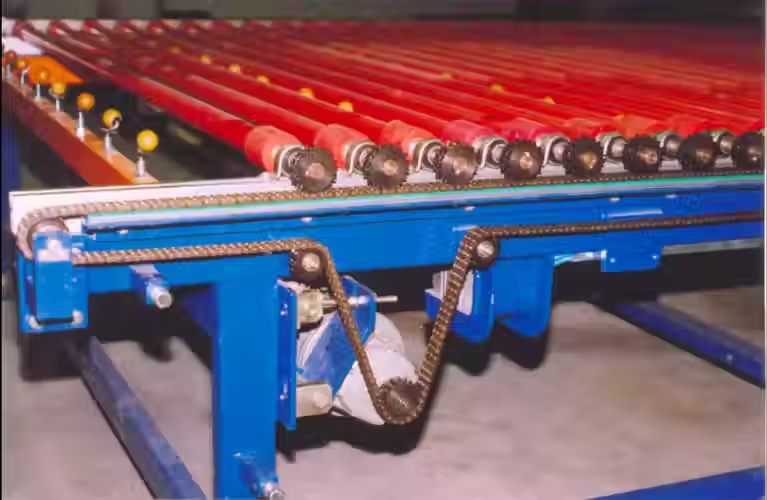Vibratory Feeder Manufacturers in India
- Jaswanth srinivas
- Oct 26, 2024
- 3 min read
Vibratory Feeder Manufacturers in India
A vibratory feeder manufacturer specializes in designing and producing equipment that facilitates the controlled feeding of materials in various industries, such as manufacturing, packaging, and food processing. Vibratory feeders are essential for efficiently handling bulk materials and parts, moving them from one point to another with precision and speed. They rely on the mechanical vibration of components to achieve smooth, regulated movement, making them integral to many automated processes. This equipment serves industries requiring precise material flow, whether for packaging parts, processing minerals, or sorting items in production lines.
How Vibratory Feeders Work
Vibratory feeders work through controlled, rapid vibrations generated by electromagnetic or motor-driven mechanisms. This vibration causes the feeder’s tray or bowl to oscillate, moving materials forward along a specific path. The frequency and amplitude of the vibrations can be adjusted to achieve optimal material flow and handling. Typically, the material is moved along the tray via a series of gentle jolts, which is much gentler than traditional conveyor systems, reducing wear on parts and allowing for the handling of fragile items. With adjustable frequency, these feeders allow for precise control over the speed and volume of materials being transported.
Key Features of Vibratory Feeders
Customizable Design: Vibratory feeder manufacturers offer a range of customizable options to cater to different industry needs. They may include bowl feeders for small components, linear feeders for elongated parts, and tray feeders for larger or bulkier items.
Material Compatibility: Vibratory feeders are versatile and can handle various materials, from small electronic components to larger industrial parts. Manufacturers design feeders to accommodate metals, plastics, powders, and even food-grade materials.
Durability and Reliability: These feeders are built with durability in mind, capable of handling large volumes of materials over extended periods without performance loss. Many models are made from high-quality stainless steel, which is resistant to corrosion and wear.
Easy Integration: Manufacturers design vibratory feeders to be compatible with automated systems. They often include control units that allow users to adjust vibration settings, ensuring seamless integration into production lines and maximizing efficiency.
Energy Efficiency: Vibratory feeders consume less power than other types of material-handling equipment, contributing to lower operational costs and environmental impact.
Low Maintenance: Because of their simple construction and lack of complex moving parts, vibratory feeders require minimal maintenance, which further reduces downtime and enhances productivity.
Applications Across Industries
Vibratory feeders are employed in a wide range of industries:
Manufacturing: Used to feed assembly lines with parts and materials in an organized and consistent flow.
Food Processing: In the food industry, feeders handle ingredients and packaged items, ensuring controlled and sanitary movement.
Pharmaceuticals: Vibratory feeders are used to handle powders and capsules, maintaining precise control for sensitive materials.
Mining and Aggregates: Feeders transport and distribute raw materials like rocks, gravel, and minerals for further processing.
Packaging: They assist in sorting and feeding parts or products into packaging machines, optimizing the speed and consistency of packaging lines.
The Role of a Vibratory Feeder Manufacturer
Manufacturers play a crucial role in designing and customizing vibratory feeders to meet industry standards and client specifications. They assess factors such as material type, handling requirements, and production capacity to create feeders that meet unique operational needs. Manufacturers also provide support services, from installation to troubleshooting, ensuring that the feeder operates smoothly in its respective environment.
Innovations and Future Trends
Recent advancements include smart technology integration, allowing vibratory feeders to be monitored and controlled remotely. Some feeders now come with sensors and IoT capabilities, enabling real-time data analysis for predictive maintenance and improved efficiency. Additionally, eco-friendly models that use less power are gaining traction, aligning with industry goals for sustainability.
Conclusion
Vibratory Feeder Manufacturers in India offer essential machinery for industries requiring precise, controlled material movement. With innovations focused on customization, durability, and efficiency, these feeders are integral to streamlined production processes across a wide range of sectors. As technology advances, vibratory feeders will continue to evolve, providing industries with even greater control and reliability in handling materials.




Comments